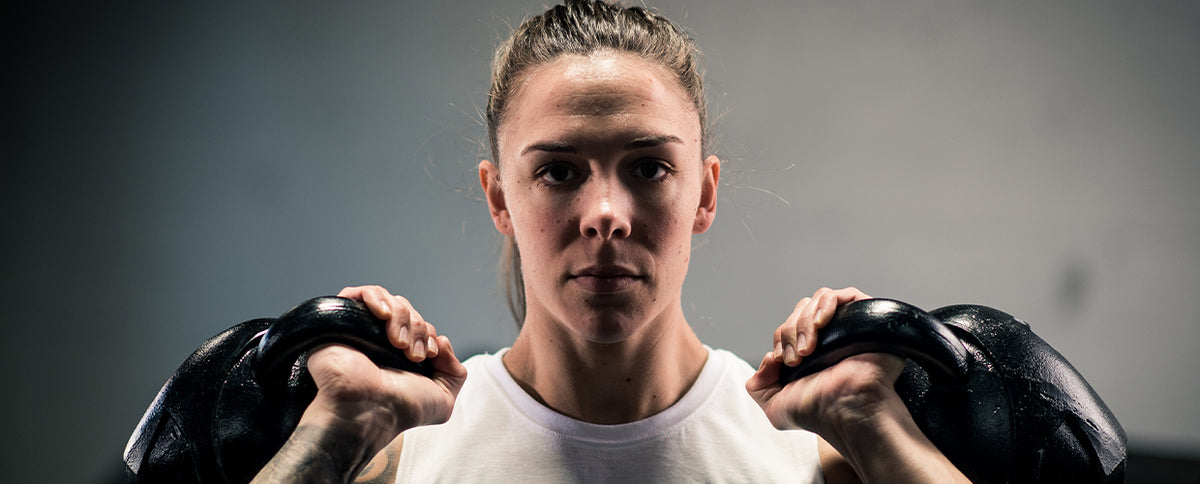How to Be a Master of All-Things Fitness (Hint: It Starts with Your Priorities)

Versatility is the ability to adapt to many different functions or activities, and it's key to becoming a master of fitness. In other words, versatility is about mixing it up — keeping your body and mind on its toes — and what Spartans should strive for. “A well-rounded athlete will perform well in any sport, most likely better than those who try to specify training to their sport,” says Sam Stauffer, Spartan’s Director of Training.
But, it’s not easy to program workouts when you want to be a pro at it all. (The age-old saying goes: jack of all trades, master of none —and there's wisdom in it.) Here, Stauffer explains which components of fitness to focus on, and how to get the most bang for your buck.
The Priorities of Training — Ranked

“Spartans need aerobic endurance, muscular endurance, mobility/flexibility, and power,” says Stauffer. You can do pure strength and obstacle-specific skill work as well, but neither pursuit should be your primary mode of training.
*Mobility and Flexibility
It’s hard to properly place mobility and flexibility in this list of priorities because it’s as important as the next two items on this list — aerobic and muscular endurance. So, we’ll keep it up here on its own. “Most obstacles will require you to get into certain positions if you want to complete them efficiently,” Stauffer notes. “This will require mobility, especially in the shoulders, hips, and ankles.” Obstacles such as Olympus, Over Walls, and the Z-Wall all require optimal hip and ankle mobility while obstacles such as Monkey Bars, Beater, and Multi-Rig require a certain level of shoulder mobility.
1. Aerobic Endurance
“The best Spartan athletes are those who can sustain their VO2Max (or a percentage of it) for long periods of time,” Stauffer explains, noting that 80% or more of a Spartan Race is running. “In most cases, athletes with a solid aerobic capacity can afford to fail a handful of obstacles. They can make up ground quickly during the run portions and are less likely to fatigue cardiovascularly when performing burpees, thus limiting the effects of the ‘burpee death spiral.’”
2. Muscular Endurance
The majority of Spartan obstacles don’t actually require pure strength. “Athletes who have honed in on their muscular endurance will be able to work through obstacles that require many reps (i.e. Monkey Bars, Multi-Ring, Barbed Wire Crawl) again and again without a high risk of fatigue,” says Stauffer.
Related: 6 Smart Secrets to Build Endurance for OCR
3. Power
Overall power is something you should look to increase as it has a host of benefits. “Specific to Spartan, increased power will help you with any jumping exercises or anything that requires you to shift into max speed,” Stauffer says. “I have this lower on the priority scale because a powerful athlete without aerobic and muscular endurance won't perform as well as an athlete who can run until the cows come home (assuming they don't fail most obstacles out on course).”
4. Pure Strength
While gaining pure strength can help reduce your risk of injury, it won't necessarily pay dividends out on course with two exceptions: the Tire Flip and the Atlas Carry. “I believe in strength training, but it is often abused, and it’s not going to help you very much from a performance perspective,” Stauffer notes.
5. Obstacle-Specific Skills
Believe it or not, this is actually the lowest priority on the list. It’s only after you have a solid mastery of movement patterns and the aforementioned fitness that you should start to hone in on your skills, per Stauffer. “We have to get you good at moving in space and then we can work on skill.”
Related: 7 Hardest Spartan Obstacles (+ Insider Tips from Spartan Specialists to Conquer Them
Master-of-All Training in Action: Start with Holistic Workouts

Rather than working on each of the tenets of fitness on individual days, Stauffer suggests wrapping several of them into holistic workouts that you do three to five days a week. On the other days (two to three days a week), he recommends focusing on aerobic endurance which could be as simple as walking or as complex as fartlek and distance training. Of course, exactly what you do will depend on your current fitness level as well as the Spartan Race distance you’re targeting (or if you’re in your off-season).
Once you’re very comfortable and efficient with these workouts, you can consider adding pure strength (like heavy lifting) or obstacle-specific training to your plan.
Spartan-Approved Holistic Workout Template
Warm Up: Mobility/Flexibility
Time: 10 to 15 minutes
Include: Stretching, mobility work, and joint activation
Part I: Power
Time: 10 to 15 minutes
Include: Power-building moves like Olympic lifts or box jumps, plus speed and agility work
Part II: Muscular Endurance
Time: 25 to 35 minutes
Include: Unilateral and bilateral conditioning exercises and moving in multiple planes of motion
